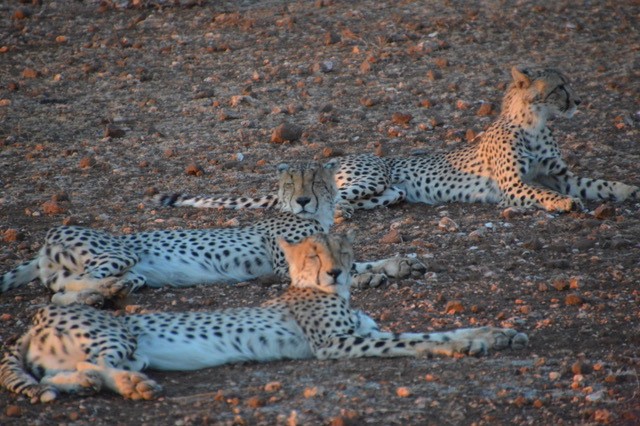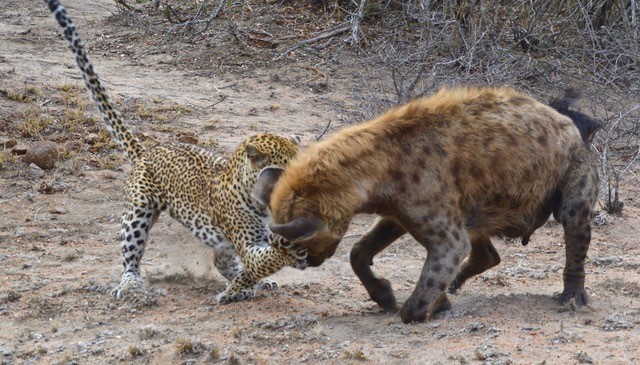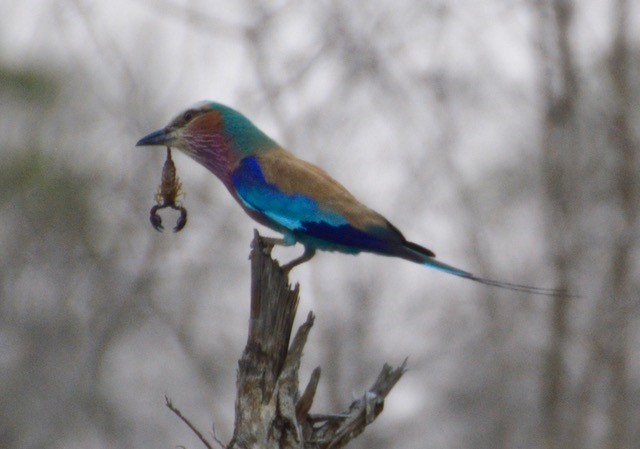Most people are thrilled to go on a safari in Africa, knowing they will see the iconic wildlife they have only seen in images or in zoos all their lives. Viewing zebras, giraffes, elephants, lions, and herds of beautiful creatures like impala and kudu in the bush is, no doubt, exhilarating. Even with these lofty expectations, I experienced far more than I ever would have dreamed.
In my professional role at WWF, I have been working for a number of years with my WWF colleagues in Asia to reduce the demand for ivory that is driving the slaughter of African elephants. As I anticipated this expedition, I looked forward to conveying to my fellow travelers the connection between the consumer thirst for ivory among newly affluent people in Asia and the brutal poaching of elephants in Africa. I wanted them to clearly see the global nature of the problem. Just as importantly, I wanted to see, hear, and feel the elephants I have been striving to protect.
I had been on a couple of safaris previously before I was invited to participate in “Hidden South Africa & Botswana Safari” as a WWF representative. WWF partners with Natural Habitat Adventures to give people an opportunity to get a glimpse of some of the treasures that WWF works to protect around the world.
To set the context, this safari takes a small group (six people or fewer) to private games reserves adjacent to large parks such as Kruger National Park in South Africa. There are no fences between these parks and the reserves, so the wildlife are free to roam, but the private reserves have limited numbers of lodges, and, consequently, fewer visitors. They have developed rules and ethics for engaging with wildlife in the reserves I visited. For instance, no more than three vehicles can be in proximity to a wildlife event. What is a wildlife event? That is the heart of my story.
The first wildlife event occurred in Mashatu Game Reserve in Botswana. On our first afternoon game drive, we encountered a female cheetah and her three cubs. The mother had just unsuccessfully chased a herd of impala without taking one down. After the chase, the three cubs lay down in the shade of our 4×4. Their faces were glowing in the late afternoon sun, and we could hear them purring, like innocent house cats.
Early the next morning, our skilled guide and driver, Jakes, took us back to the same area of the reserve. Again, we saw the cheetahs. Like the day before, the adult female sprang after a herd of impala. Jakes took us off the primitive track we had been driving on and steered our vehicle overland, bumping over the terrain in pursuit of the cheetah. Twigs and thorns rattled against the sides of our Land Rover, while we held on for dear life with our eyes transfixed on the developing action.
The cheetah took down an impala, and we witnessed her strength and efficiency in killing it. I was struck by the intimacy of the kill. She had at first slowed down the impala from the rear, but the actual killing was face-to-face, as she bit through the neck of the impala. I had never before witnessed directly one animal killing another. I am not a hunter, and I am not violent person. But I saw that the cheetah was a predator who must eat to survive and to feed her cubs. This experience simply forced me to confront the reality of survival in an environment of predators and prey. It also caused me to reflect on predator/prey relations in our human world.
Then, I saw the exhausted cheetah, breathing heavily, heart pounding, drag her kill into the shade. What happened next was as profound as the kill.
She was desperately trying to get the attention of her young cubs, which, by now, were hundreds of yards away. I could sense her anxiety, as she summoned her family, while guarding her kill. I contemplated the consequences of her being blind-sided and robbed by a lion or a hyena that could have stolen her hard-earned quarry. We were positioned behind the older cheetah as her cubs, one after the other in a line, eagerly approached. I will spare you details of the feast, except to say, this cheetah family got what it needed to survive another day in the bush.
The next day, we awoke at 5:00 AM, as was usual on this expedition. That morning, we saw many of the wildlife species that one would hope to see in Africa. One animal that I had never seen in the wild is the leopard. I treasure the leopard as one of the most beautiful species in all of nature. After rambling through a variety of landscapes, Jakes took us to large, distinctive tree. Our next wildlife event was about to happen.
We looked up and, perhaps, sixty feet away was a gorgeous leopard perched on a thick branch in the massive tree. Russell, our expedition leader, confirmed with our group that everyone was comfortable with the distance, and reminded us that no one was to stand up or get out of our vehicle. No one was about to get out of the 4×4 As we gazed in awe, and shot dozens of photographs, Russell explained that in his experience even the most dangerous animals in the bush are not afraid of such vehicles if they are a generation or two removed from the former days of hunting, and if no one aboard violates any of the clear rules.
We were fixated on this magnificent creature for perhaps 45 minutes, as the leopard modestly changed positions in the tree and as the morning light subtly altered the colors we could see on its face and body. We alternated between looking through our camera lenses and looking directly on the object of our interest. Jakes occasionally moved our vehicle to give us different perspectives. Other vehicles came, but there were never more than three at one time.
I travel a lot, and take many pictures, but I have never taken more photos of one scene than I did of that leopard. If this was all we would see on this trip, I honestly would have been satisfied.
A few days later, we heard rumors of another leopard with a young cub. Our guides told us that timing is everything in the bush, both in terms of seeing specific species of wildlife and, also, in terms of witnessing interactions between them. Again, after bushwhacking through uneven terrain heavy with shrubs, we were thrilled to see the rumored adult leopard and cub standing together adjacent to a tree. A large and mangy hyena entered the scene. We were well positioned and wide-eyed. The next thing I saw was the cub scrambling up the tree, as the hyena got closer. This was a scene that could not have been choreographed by man.
With the cub up in the tree, the hyena continued his approach. Finally, the mother leopard growled and sprang at the hyena. I could see her right front claw cross his body. The encounter did not last long. The hyena withdrew, and the adult leopard stood posted at the base of the tree where her cub was perched. This drama, and the others I related can be seen easily in many nature films. But there is no way to adequately describe the richness of these experiences in real life and in real time.
There were other exciting wildlife events that I witnessed in Manyeleti and Malamala game reserves, including:
- A pride of 18 lions devouring a cape buffalo in a grisly night time scene full of blood and growling;
- These same lions looking passive and benign the next day, so bloated they could hardly move;
- A pair of lions mating in a meadow in the early morning light;
- A clan of hyenas playing with one another near their den along a riverbank, more like a happy family than deadly predators and scavengers;
- A pack of seldom-seen wild dogs scampering away from our vehicle in close proximity to a herd of cape buffalo at dusk;
- Elephants of varied ages and sizes munching on shrubs and trees, parading on all sides of our vehicle, drinking water and bathing;
- Dozens of dusty vultures aggressively and noisily picking at a kudu carcass;
- A spectacular Lilac Breasted Roller on a dead branch with a scorpion in its beak;
- A troop of baboons frolicking by a pool of water as a pair of guinea hens waited desperately for a drink, vulnerable to the seemingly innocent troop
There were many more events that contributed to a profound sense of being part of the wilderness habitat and its denizens, rather than simply viewing it. Overall, I left the safari with a greater sense of the challenges of both predator and prey during the dry season in Southern Africa. These secluded game reserves provide unique opportunities to see intimate behavior of wildlife, both within and among species. My fellow travelers left the expedition with similar insights and a greater sense of what is driving the poaching of elephants and rhinos in Africa. I am grateful to have been in such a rich environment with such skilled and competent local guides.
By Jay Sherman, WWF-US





























